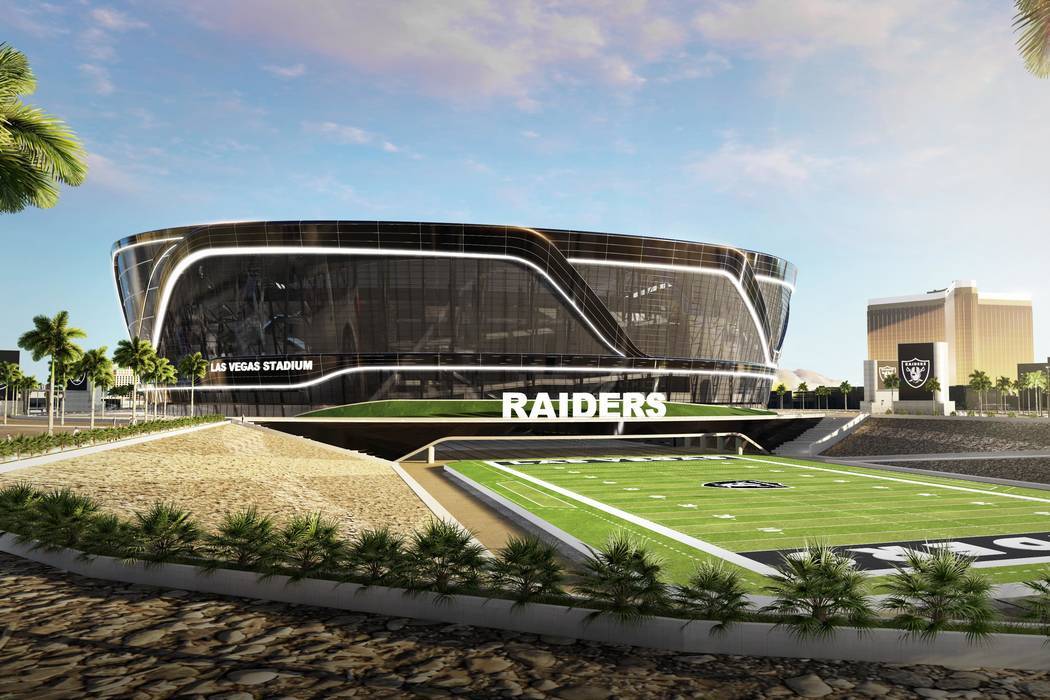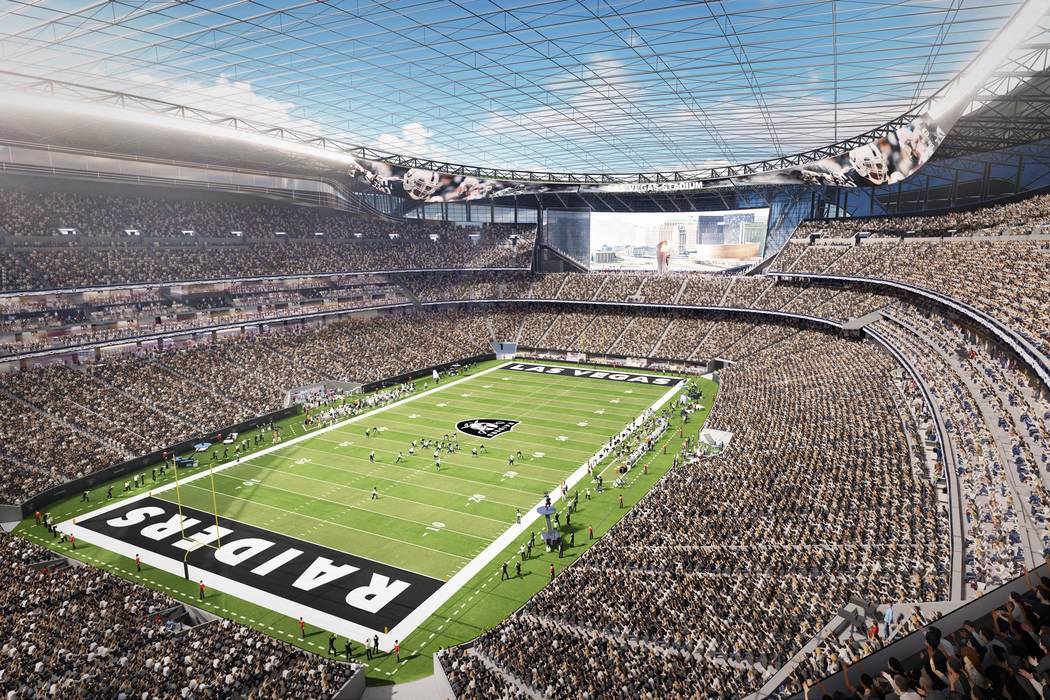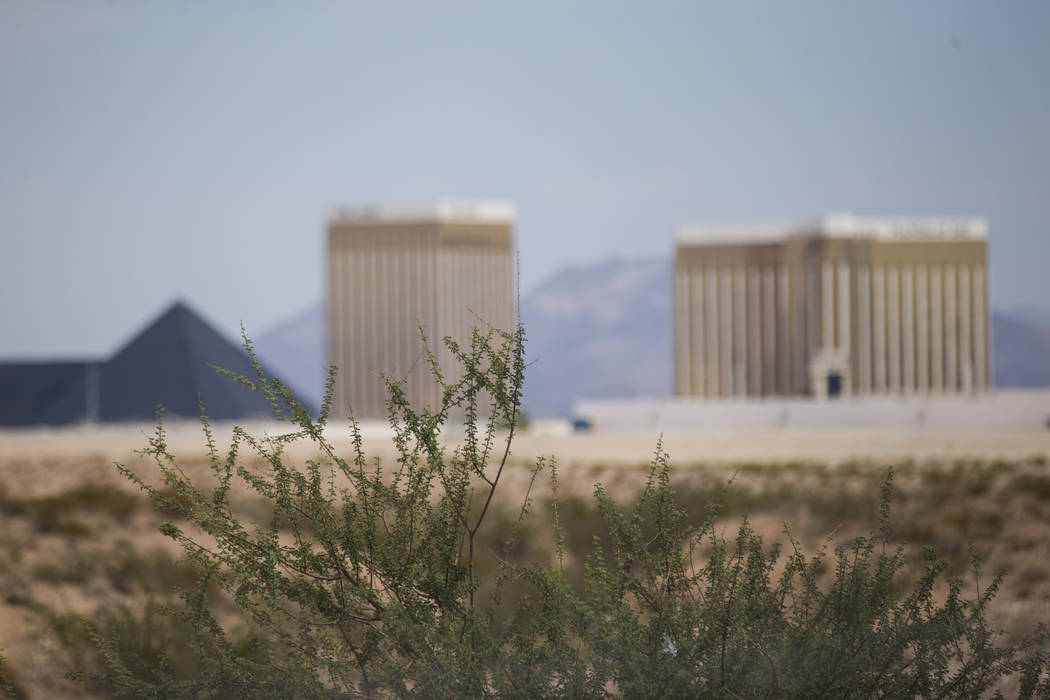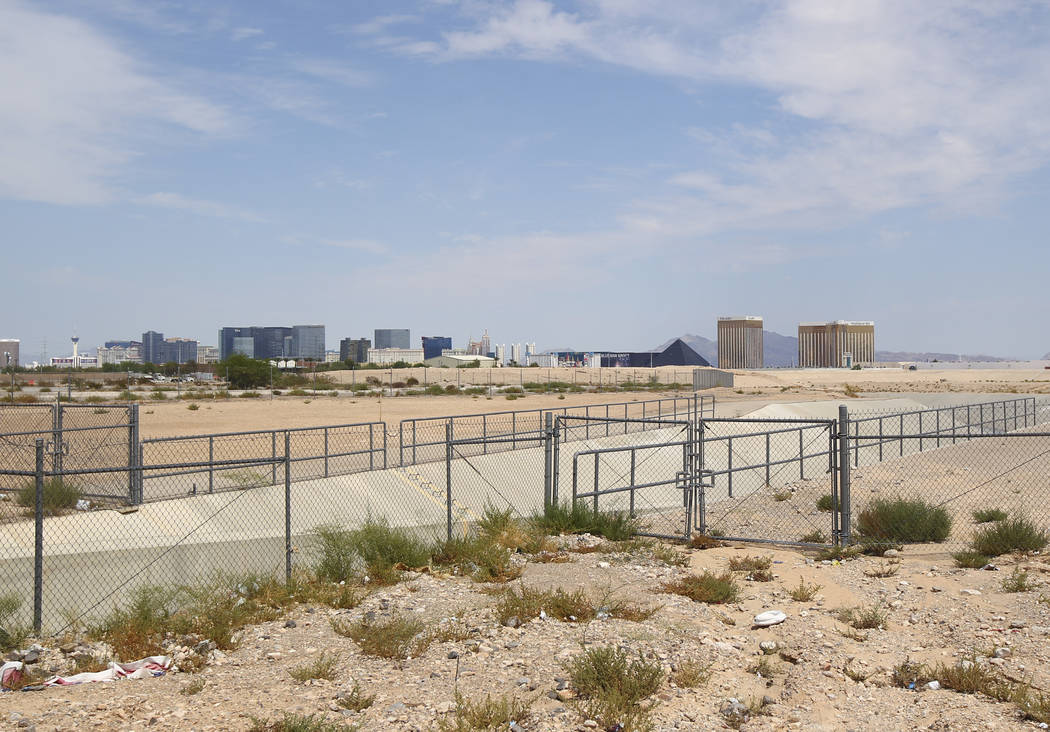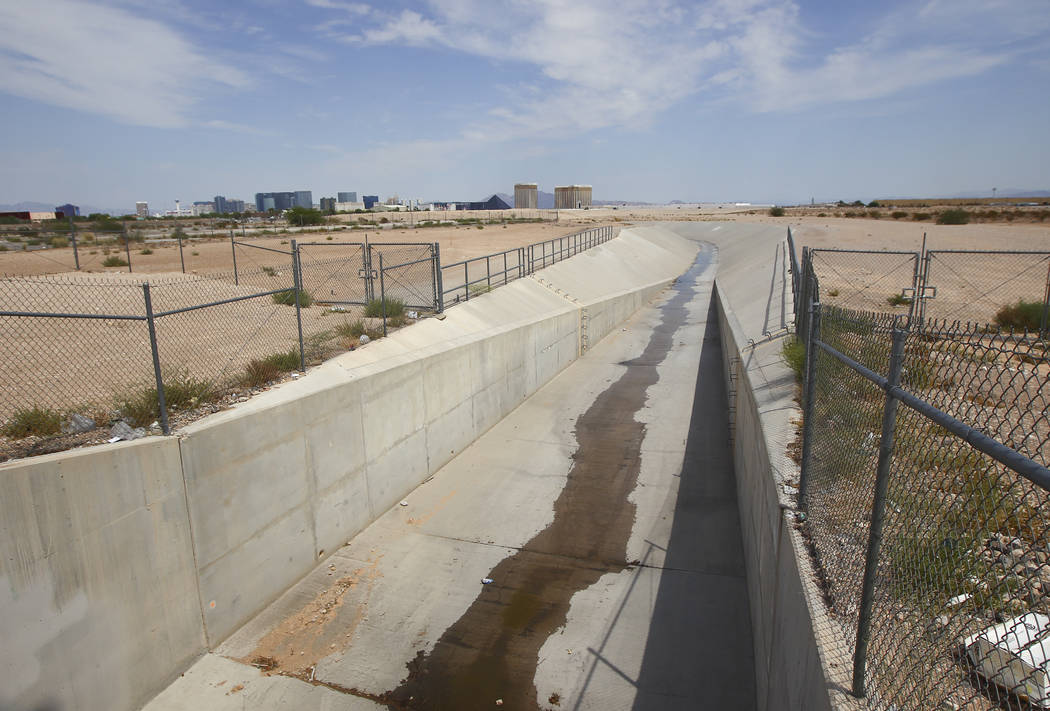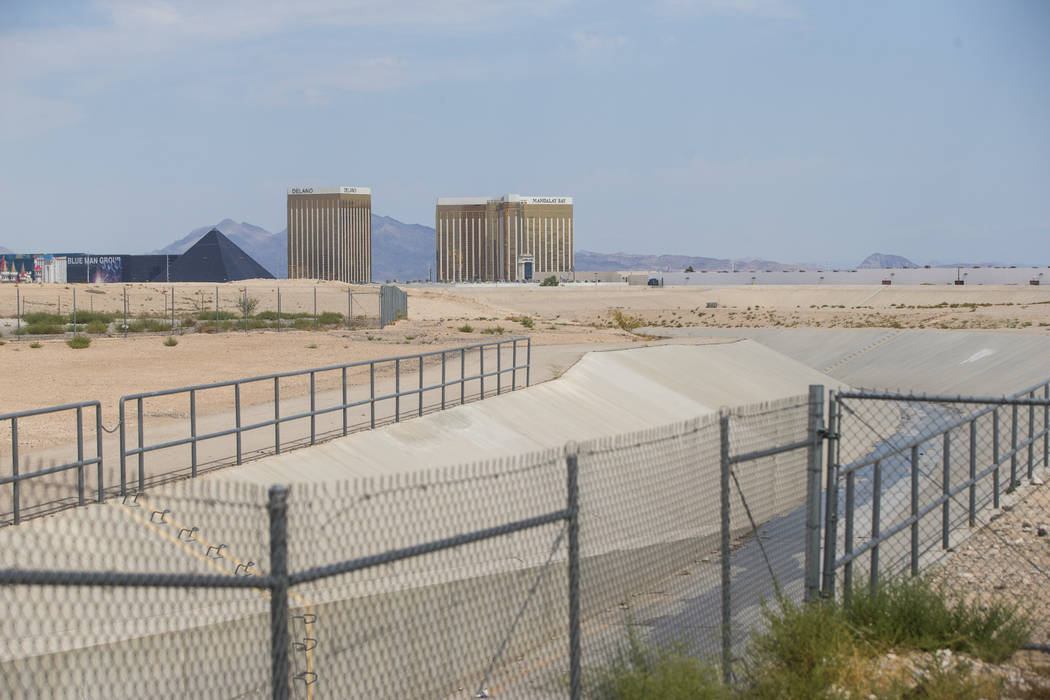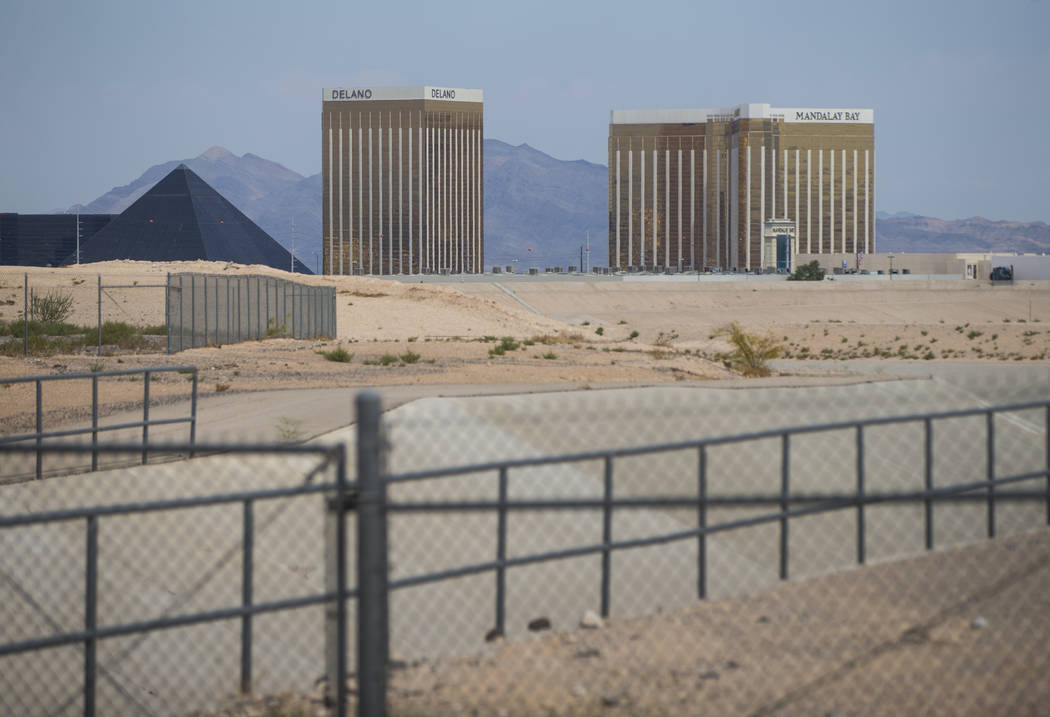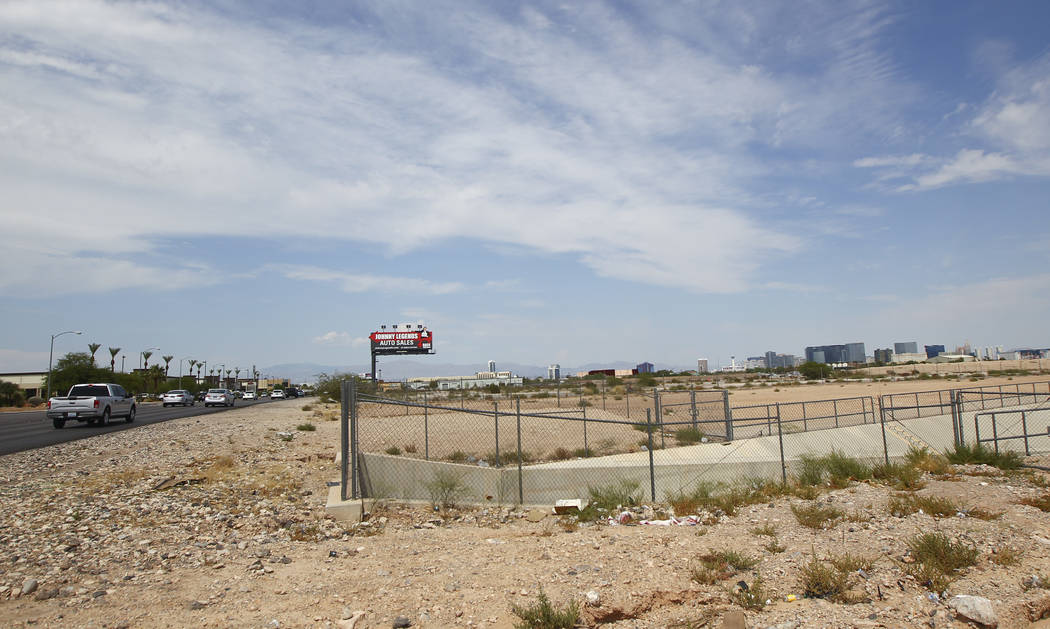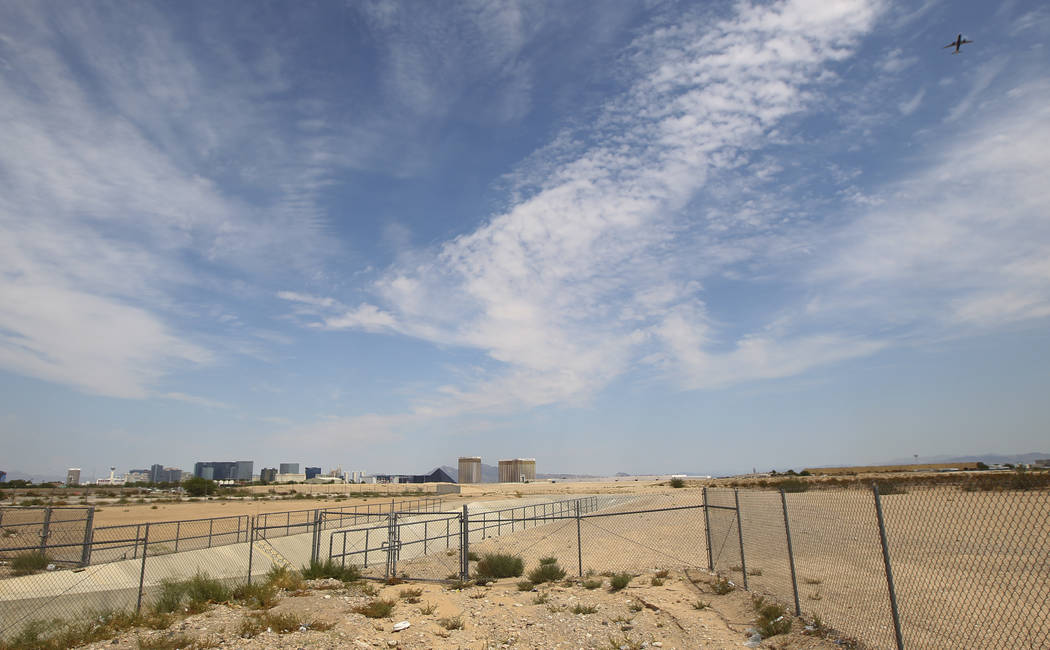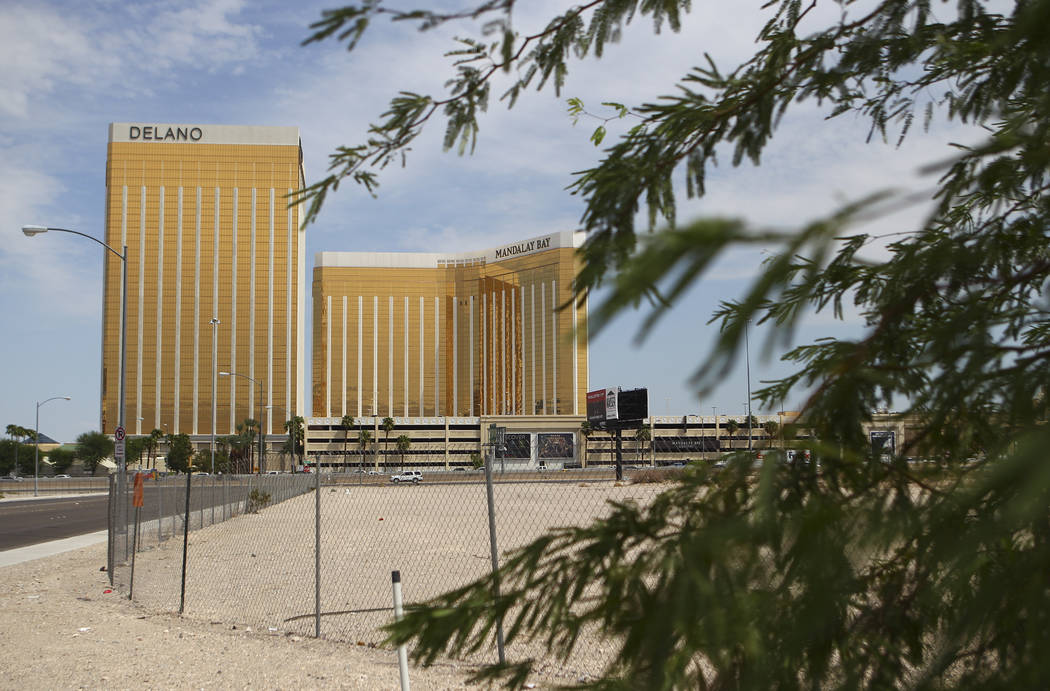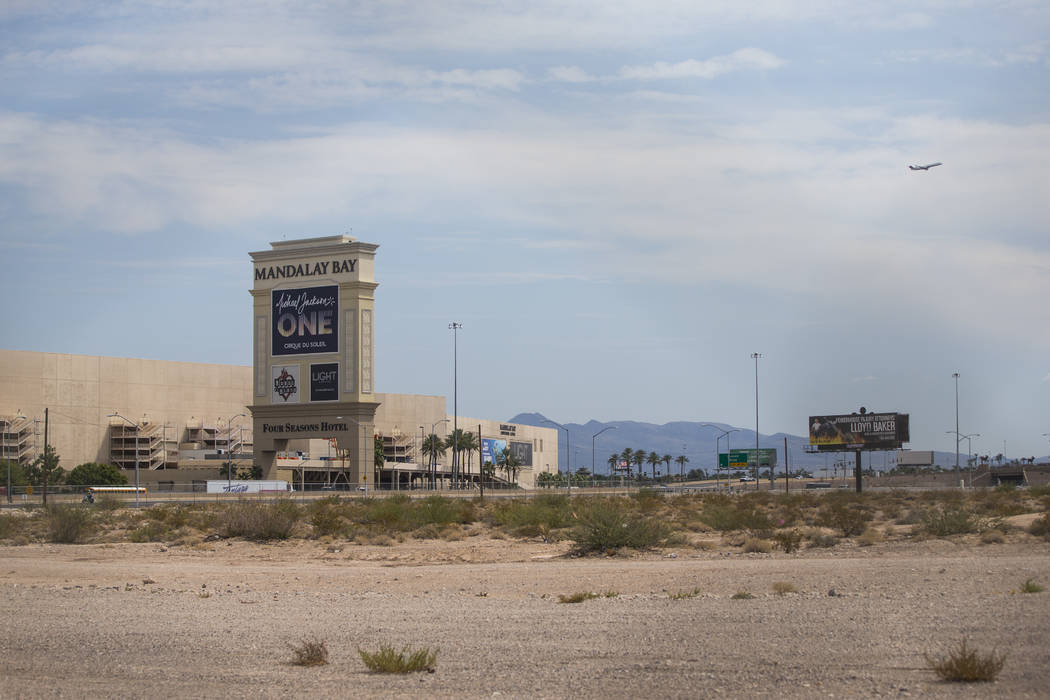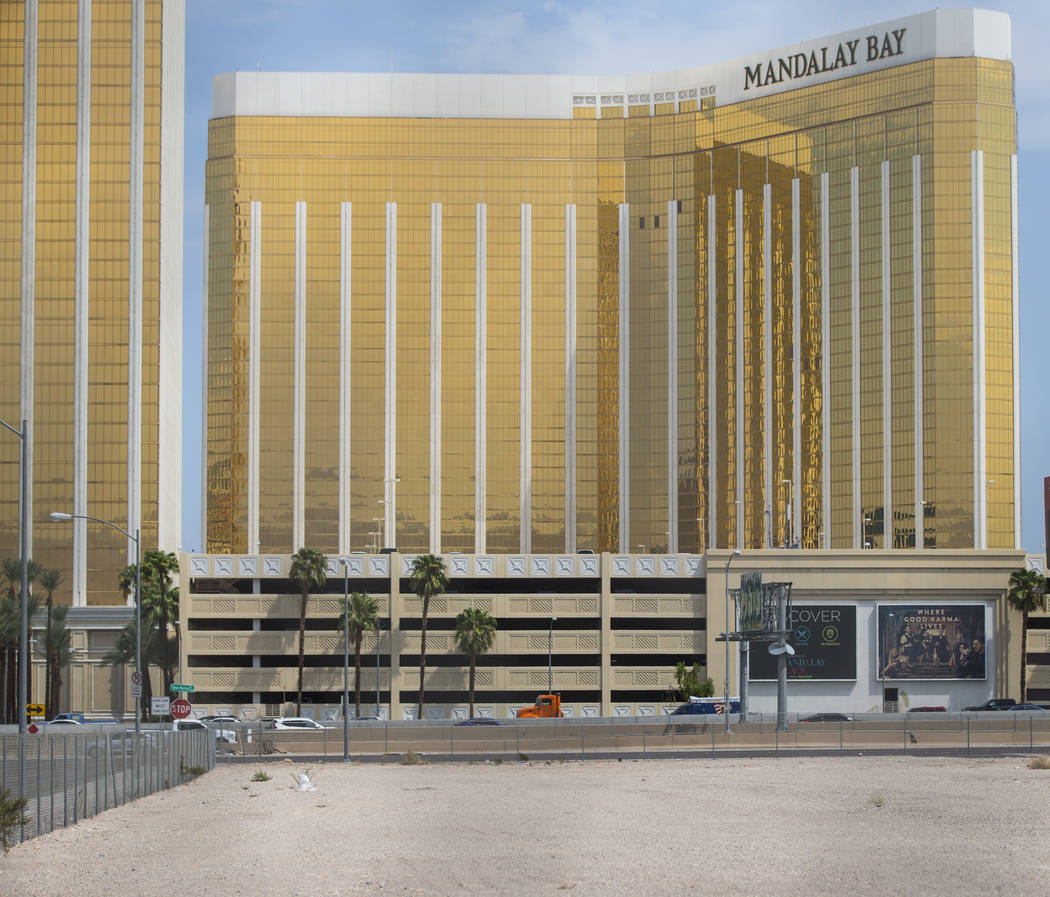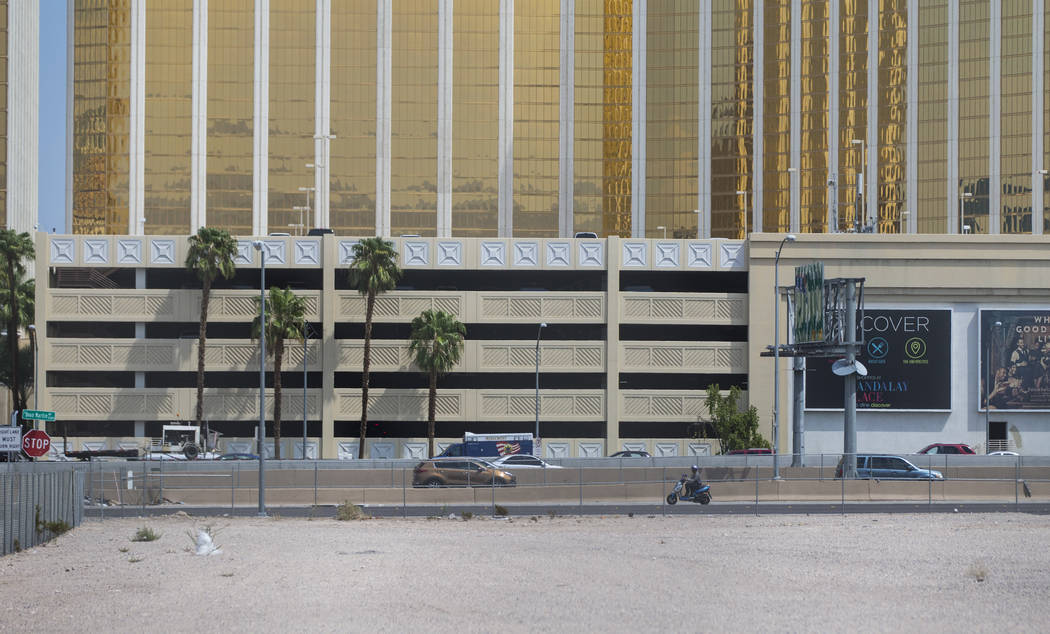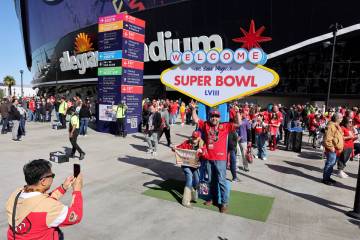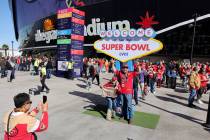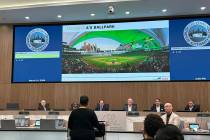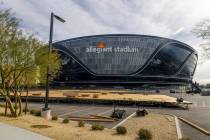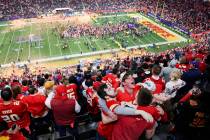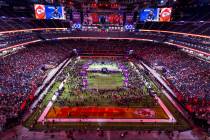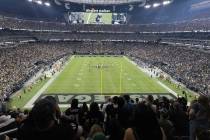Federal review of storm channel could delay Las Vegas Raiders stadium work
Work at the site hasn’t even begun, and the NFL stadium in Las Vegas already faces its first possible construction delay.
Clark County Regional Flood Control District General Manager Steven Parrish said site work for the Raiders’ stadium could be slowed by the relocation of an underground flood-control channel that carries stormwater from the Tropicana Detention Basin to the Flamingo Wash and cuts through the property across Interstate 15 from Mandalay Bay.
Moving the box culvert won’t be that complicated or expensive, Parrish said Thursday, but it does require review and approval from the Army Corps of Engineers.
Efforts are now underway to speed the review, but Parrish isn’t sure it will be done in time for construction at the 62-acre site to begin as planned in late November.
“That’s the million-dollar question,” he said. “Unfortunately, the Corps has their own timetable, and they do things at their own pace.”
Approval from the Corps is required because the culvert is part of a larger flood-control project involving the federal agency and paid for in part with $252 million in federal funds.
Parrish said a portion of culvert will need to be moved about 150 feet to the west to clear the way for construction of the 65,000-seat domed stadium. Not much else can be done at the site until the culvert has been reconfigured, he said.
“It’s pretty important that they get it permitted and get it moved as quickly as possible. It needs to get out of the way,” Parrish said.
Commissioner expects no delay
Jay Field, spokesman for the Corps of Engineers’ district office in Los Angeles, said the review will cover any engineering, environmental, legal and safety issues associated with changing the flood channel.
“We can’t speculate on how long it would take. Every project is different,” Field said.
Clark County Commission Chairman Steve Sisolak said Thursday that he doesn’t expect the culvert relocation to delay the stadium project. He said planners are aware of the issue and have been discussing it with the Corps of Engineers “for quite a while.”
“They’ve worked with the Corps, they’ve got a plan, they’re working with their permitting, and I’m confident that will be addressed in a timely manner that won’t cause any delay,” Sisolak said.
Moving the flood channel will require a so-called Section 408 permit from the Corps, but the agency has exhausted its budget for such permit reviews and won’t get more money for the program before the start of the next fiscal year on Oct. 1 at the earliest. In the meantime, the only way to get the Corps to conduct a Section 408 review is to pay for one.
On Aug. 10, the flood control district board approved up to $120,000 for an expedited review. Parrish said the stadium developer has already reimbursed the district for its payment to the Corps. That would allow the review to begin before Oct. 1.
The developer also will pick up the tab for the culvert work itself, which is expected to cost at least $1 million. Parrish said no tax money will be used to realign the flood channel.
Part of larger flood project
The culvert carries stormwater from the Tropicana Detention Basin near Decatur Boulevard and Russell Road to the Flamingo Wash near Flamingo Road and Swenson Street. After making an S-curve through the stadium site, it runs under I-15 and the Excalibur property, crosses the Strip at New York-New York, and runs diagonally beneath MGM Grand and Hard Rock Hotel on its way to the wash.
Parrish said the section of box culvert beneath the future home of the Raiders is about 6 feet tall, 15 feet wide and buried roughly 2 feet below the surface. It was built as part of a $336 million project, completed about eight years ago, to capture floodwater in the southwest valley with five new detention basins and 28 miles of channel.
Plans for the stadium involve excavating 30 feet below ground level to create the stadium’s inner bowl and playing surface beneath a translucent ceiling rising 225 feet in the air.
The construction timeline calls for site work to begin Nov. 29, with blasting and excavation starting in December and lasting into next year.
The goal is to complete the stadium in June 2020 and open for the NFL season that year.
Contact Henry Brean at hbrean@reviewjournal.com or 702-383-0350.
Stadium back to commission
Clark County Commission Chairman Steve Sisolak said the commission will take up another step in the stadium process on Wednesday.
Commissioners are scheduled to discuss the high-impact project review, which includes a comprehensive look at how the stadium will affect roads, traffic, parking, emergency services and all utilities, including water and sewer lines as well as drainage, as well as the area surrounding the stadium.
Commissioners postponed a meeting in August to await a height-restriction report on the stadium from the Federal Aviation Administration. The FAA's preliminary report, issued Aug. 16, found that flights at McCarran International Airport would not be impacted by the planned 65,000-seat domed football stadium, which will stand 225 high.
The FAA cut short the time for public comments before the agency issues a final determination on height restrictions. Had the administration's later public comment deadline of Sept. 22 been allowed, it would have prevented commissioners from considering zoning permits for the stadium until October at the earliest.
— Richard N. Velotta



